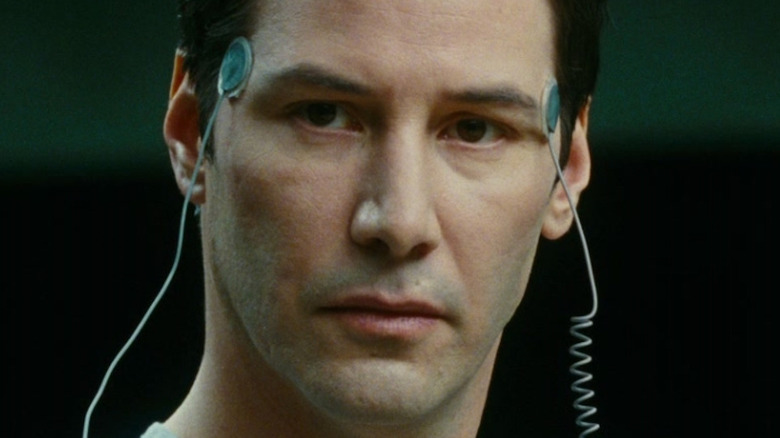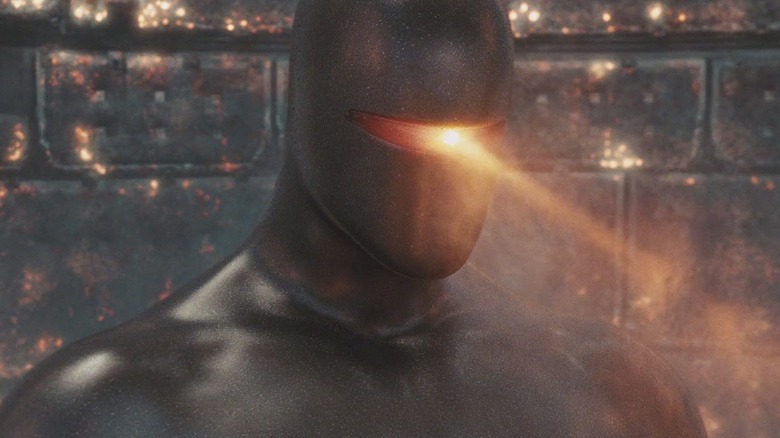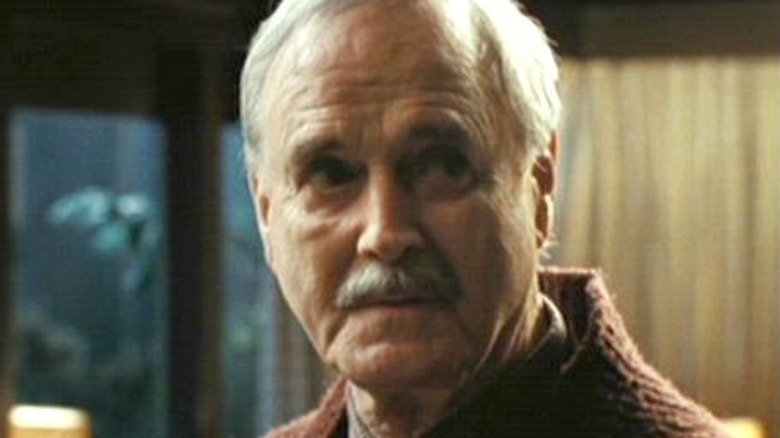The Ending Of The Day The Earth Stood Still Explained
If you're going to remake an all-time classic, you've better have a pretty good reason for it. "The Day the Earth Stood Still" is one of film history's seminal early science fiction works. Directed by Robert Wise, who edited "Citizen Kane" and would go on to direct "West Side Story," "The Sound of Music," and "Star Trek: The Motion Picture," the 1951 story of the planet's first contact with an alien arbiter that came to pass judgment on humanity would inform generations of the genre's stories. The unstoppable robot Gort became a model for future Terminators and assassin droids. The failsafe phrase "Klaatu barada nikto" entered the culture despite its alien language of origin.
It's a lot to live up to, even for a retelling of the story that broke the otherworldly stoicism of Keanu Reeves out of movie jail to play Klaatu, the extraterrestrial emissary. But there is one big reason for director Scott Derrickson's 2008 version of "The Day the Earth Stood Still" to exist: we haven't learned the lesson of the original.
How the ending of The Day the Earth Stood Still carries the film's message
Though the execution is different, the message of the 2008 version of "The Day the Earth Stood Still" is very much the same as that delivered by the original film in 1951: stop killing each other, and the planet, you morons. In the 1950s, of course, said message came covered in a fair helping of Cold War paranoia. The Soviet Union had just tested its first atomic weapon a mere two years before, but even as the nuclear arms race was in its infancy, it was still easy to imagine how the next era of warfare might create a conflict that would consume the planet.
The remake posits that humanity has not learned its lesson, even nearly 60 years on. We have merely chosen a new form of the destructor, something different than either a nuclear-tipped superpower staring contest or the Stay Puft Marshmallow Man. While the 1951 Gort was an advanced form of weaponry –– an indestructible robot with laser eyes that vaporized guns and tanks in a flash of light –– the remake's version gives the robot the ability to morph into a plague-like swarm of nano-machines that eat away at anything man-made in its path. The machines use the raw materials to generate more of themselves, allowing them to devour all trace of mankind even faster. It's not war that will destroy humanity, but rather our drive to consume.
What happens to Klaatu in The Day the Earth Stood Still?
But in the end, Klaatu is convinced to stop the swarm. He meets with the Nobel Prize-winner Professor Barnhardt (John Cleese), who argues that humanity is staring over the precipice of its destruction but hasn't yet tipped off the edge. He spends time with the closest thing he has to a human guide, astrobiologist Helen Benson (Jennifer Connelly) and her stepson Jacob (Jaden Smith), and seeing the small scale, interpersonal love that passes between them convinces Klaatu that humanity might be capable of something other than destruction. He moves through the swarm as it eats away at him in order to reach his ship and deactivate the protocols.
But in its aftermath, all electrical activity on the planet ground to a halt. In the original film, Klaatu flipped the switch on the world for half an hour as a demonstration of his power. Here the film ends with the world blacked out. Klaatu told Barnhardt, "Your problem is not technology. The problem is you. You lack the will to change." But this ending certainly seems to imply that, to paraphrase an Eddie Izzard joke, the technology helps. By turning off the lights, and everything else, the film posits that it's going to take a hard reset for humanity to have a hope of saving itself.


